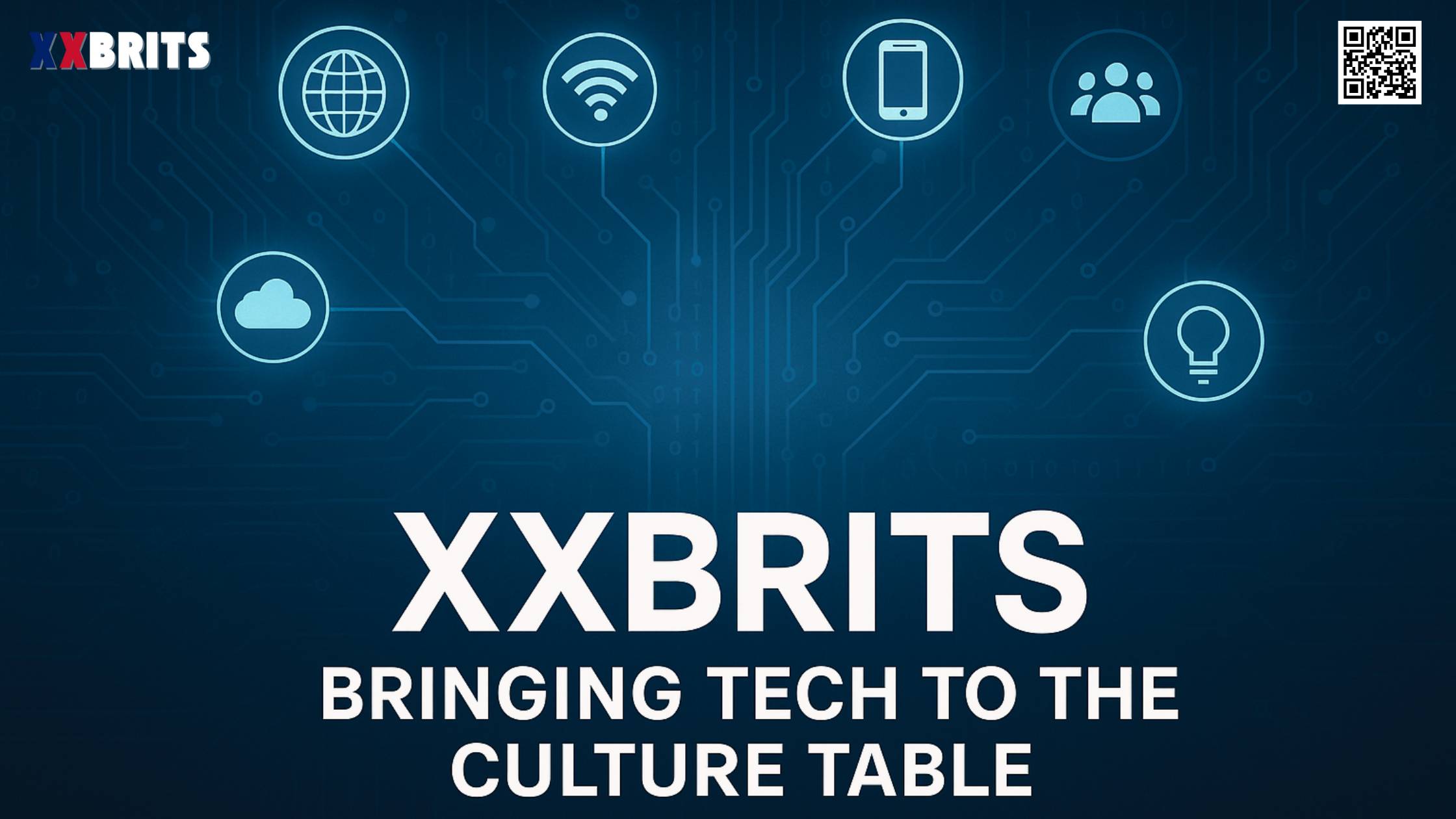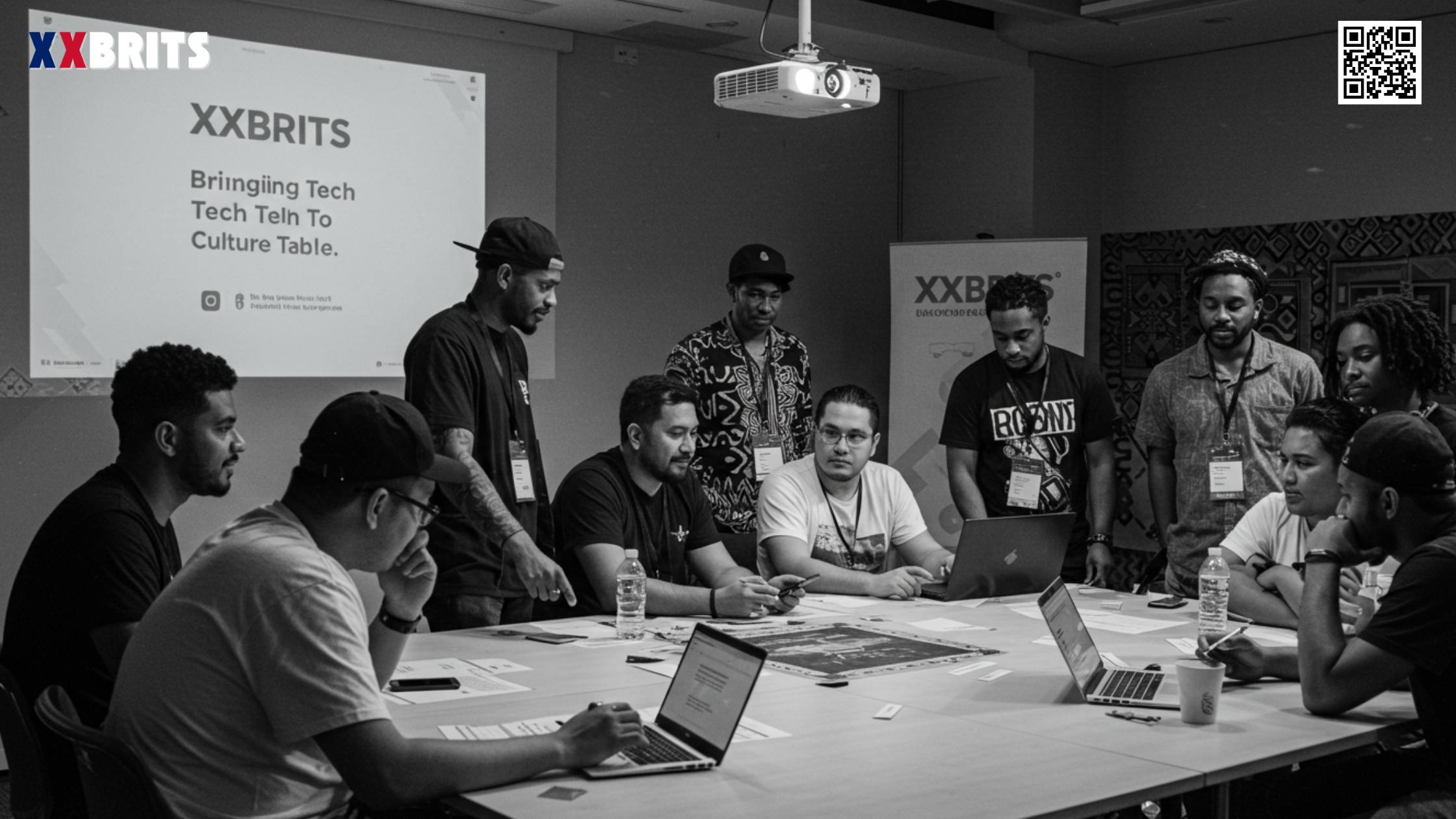Have you ever walked through a museum or browsed a gallery and thought, “There must be more to this than just staring at things on walls”? Or maybe you’ve scrolled past yet another music drop or viral dance trend and felt like you were only scratching the surface of what’s really going on.
The truth is, culture has become more digital than ever, but the way we experience it often still feels outdated. We’ve got endless content, fast connections, and AI running half the apps on our phones, but when it comes to connecting tech with real cultural experiences — things still feel disconnected.

And that’s where XXBRITS steps in.
Why It Matters — And How It Helps All of Us
Let’s keep it simple: XXBRITS isn’t just throwing tech at culture for the sake of it. They’re giving it context, structure, and accessibility. They’re not building some virtual museum or NFT nonsense — they’re helping us actually understand what’s behind the music, art, streetwear, and events that shape our world.
Whether you’re a student trying to get into creative media, a curator wanting to digitise archives, or just someone who loves knowing how trends start — XXBRITS is making that journey way more understandable.
Here’s what it means in practice:
- Digital archives for cultural institutions so they don’t lose decades of value.
- Data mapping to trace how subcultures evolve across cities and online.
- Visual tools that help artists showcase their heritage in new formats.
- Interactive platforms that connect creators with cultural roots.
It’s not just about saving the past — it’s about making sense of the present and giving tools to shape the future.
What Does It Mean to Bring Technology to Culture?
This isn’t about slapping a QR code on a gallery wall. It’s about building context around creative work using real-time tools, machine learning, and community input.
Take digital ethnography — a field where tech meets anthropology. Instead of a researcher sitting in a village writing notes, we now have platforms that track digital behaviour, community language, and media usage — offering deep understanding of urban identities and cultural shifts.
Terms You Should Know (with real-life examples):
| Term | What It Means | Example |
| Metadata | Data that gives info about other data | Tags on a SoundCloud track that tell you the genre, mood, artist city |
| Cultural Tagging | Assigning cultural context to content | Labeling a beat as “UK Drill” and linking it to social/political issues |
| Archival Layering | Combining old content (videos, interviews) with new formats | A mixtape that uses 90s pirate radio snippets between tracks |
| Data Mapping | Visualising cultural patterns and links | A map showing where grime originated and how it spread through boroughs |
How Are Institutions Using Tech to Stay Relevant?
The British Library, Tate Modern, and Black Cultural Archives are just a few entities making use of XX BRITS and other platforms to digitise collections, make content searchable, and engage younger audiences through tech.
They’re not just storing things in the cloud — they’re:
- Using AI transcription to decode handwritten letters from Black British activists
- Creating digital exhibitions with interactive timelines
- Hosting online workshops that use augmented reality (AR) to recreate cultural events
Let’s face it, if the next generation only engages through screens, then that’s where history and culture have to live too.
Why Are Subcultures Central to This Work?
Because they carry meaning.
Subcultures like Afro Swing, UK Drill, Jungle, Garage, or even the Rave Scene in 90s Manchester don’t just happen — they come from specific conditions, places, and pressures. And you can’t understand them just by listening to a track or seeing a photo.
XXBRITS focuses on those underrepresented narratives and gives them the technical backbone to be archived, mapped, and appreciated.
Attributes of Cultural Tech That Matter:
- Community-led frameworks
- Geotagging tools
- Open-access platforms
- Cultural ontology databases
- Multi-format storytelling (audio + video + text)
These tools help preserve and contextualise subcultures so they’re not lost or misrepresented.
Can We Trust Digital Culture to Represent Real Life?

Good question. The risk of misrepresentation is real. Anyone can upload content and claim it’s “culture” — but without attributes like timestamps, location metadata, or even oral history annotations, things can easily get skewed.
XXBRITS puts effort into standardising data protocols, and works with local communities, creatives, and historians to ensure everything is grounded in real stories.
Real-life Scenario:
A collection of grime sets from pirate radio stations in Bow is digitised. Without metadata, it’s just 100 audio files. But with cultural tagging, it shows:
- Which MCs appeared where
- How language evolved
- When certain themes (like police surveillance) became common
- The rise of women in the scene over time
Suddenly, it’s not just a sound file. It’s a timeline, a community, a narrative.
How Are Young Creators Benefiting From This Shift?
Young talent often feels like they’re starting from scratch, unaware of the roots behind their genre, style, or creative flow.
With platforms like XXBRITS, they get access to:
- Open archives they can sample from
- Maps of how genres connect
- Templates for cultural storytelling
- Digital tools to share their own narratives with context
In a world that moves fast, having contextual history and technical access is power.
Entities Making It Happen (Beyond XXBRITS)
Let’s name names — because entities matter.
- Black Cultural Archives – The only national heritage centre dedicated to collecting, preserving and celebrating the histories of African and Caribbean people in Britain.
- Create London – Aims to commission art that’s deeply rooted in communities.
- Young Urban Arts Foundation (YUAF) – Uses tech to connect vulnerable young people to creative opportunities.
- SoundSystem Outernational – Archiving global sound system culture using immersive and interactive media.
- RCA’s Creative Computing Institute – Fusing art and code through community-driven projects.
XXBRITS works alongside or draws influence from these bodies, helping bridge gaps between tech and culture using tangible formats.
Why We Need to Talk About Cultural Rights in the Digital Age
Here’s where it gets real. When someone uploads footage from a Windrush Day march, who owns it? Is it the person with the phone? The platform? The community?
Cultural rights are now a digital issue — and XXBRITS is working with lawyers and archivists to create frameworks for shared ownership, credits, and permissions.
Because the last thing we want is history getting swallowed by big tech without recognition.
The Future of Cultural Tech — What’s Coming?
It’s not about gadgets — it’s about access.
We’re already seeing trials with:
- Blockchain for content authenticity (no, not NFTs — real archival validation)
- AI voice indexing for oral history interviews
- Virtual archives that replicate physical exhibits with location data
- Geo-specific storytelling through mobile apps tied to local areas
All this tech isn’t replacing tradition — it’s supporting it in a way that feels relevant and real. Discover XXBRITS Is Shaping Modern Britain Through Style, Culture & Innovation
Conclusion: Tech Can’t Replace Culture — But It Can Record It Better
Here’s the truth. We don’t need more filters, more apps, or more viral content.
What we need is tools that listen, structures that remember, and platforms that respect the communities behind the content.
XXBRITS understands that. They’re not just throwing tech at culture. They’re asking the right questions, working with the right people, and building the kind of platforms that actually matter.
If culture is the soul of society, then cultural tech is its memory.
